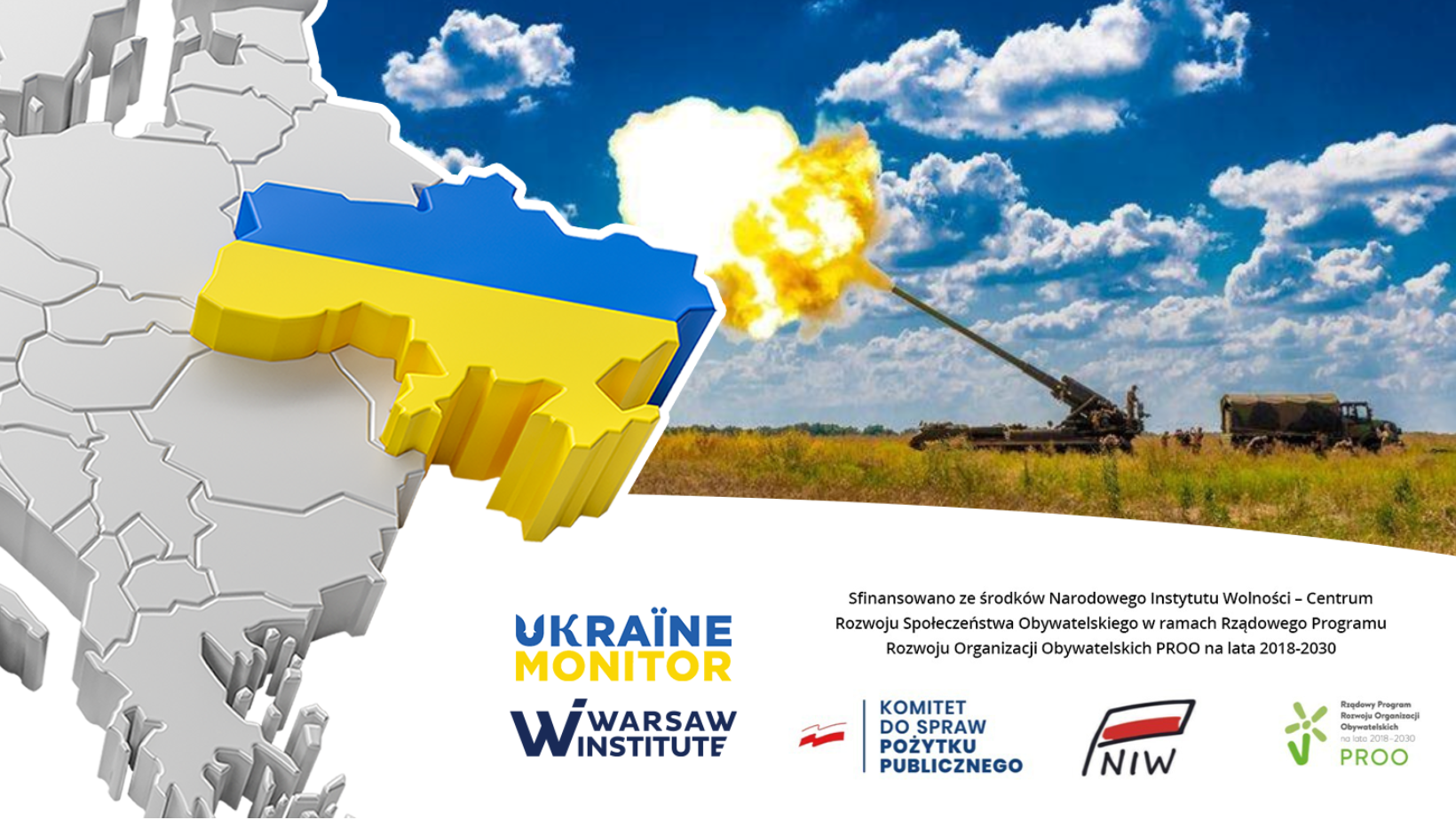
Ukraine Monitor presents the latest news concerning internal and external matters of Ukraine – a unique country where the interests of the East and the West clash almost every day.
Date: 8 September 2022 Author: Grzegorz Kuczyński
Ukraine’s Attack Near Kharkiv Poses a Threat to Russia’s Goals in the Donbas
As of now, three theaters of land warfare can be distinguished in Russia’s war with Ukraine. One is the southern front, mainly the Kherson region, or more precisely its part on the western side of the Dnieper River. To the east, there are two major fronts. Until recently, the key one had been the Donbas, but the last days on the Kharkiv front turned out to be of great importance for the power balance along the border of the Luhansk and Donetsk regions.

Last week’s Ukrainian offensive on the right bank of the Dnieper, between Nikopol and Kherson, made the Russian command concentrate its attention on the southern front, where, in previous weeks, it had already redeployed a significant part of its forces. Since the constant goal of the Russian commanders (which Putin demands to be achieved) is the seizure of the entire Donbas, the concentration of their troops in the Kharkiv region has necessarily weakened. However, for a long time, Russia’s goal has been to destroy Kharkiv with shelling and to secure the key supply line that runs north to south from the Russian town of Valuyki, through the Ukrainian town of Kupiansk, all the way to Izium. This line mainly comprises the P-79 road and the railroad. Recent developments in the south resulted in the Russians probably even halving the size of their troops in the Izium direction and getting rid of its better half. Almost all of the line units returned to the southern banks of the Dnieper River.
Some 10,000–15,000 troops remained at Izium, among whom many were not well-qualified: reserves, National Guard of Russia troops, and “militias” from the so-called people’s republics in the Donbas, largely composed of forcibly conscripted residents of the region. All this was an open invitation to the enemy. On Tuesday, September 6, many alarming posts appeared on Russian social media profiles monitoring the war situation regarding the major progress of Ukrainian forces advancing near Balakliia (which the Russians seized in March).
According to available data, in the first hours, the Ukrainians had already made a breakthrough at least 15 kilometers deep in the northwest of Balakliia, laid fire on access roads, and then seized the city. It is an important transportation hub northwest of Izium, with the T2110 road running from north to south and the P78 road stretching from east to west intersecting here. The Ukrainians then moved toward Volokhov Yar and Shevchenkove – heading north of the T2110 road. Both places were seized within the next 24 hours.
The main axis of the Ukrainian military offensive runs from the southwestern part, from above the Seversky Donets, to the northeastern one, toward Kupiansk on the Oskil River. If it succeeds, it will mean destroying not only Russia’s main supply route for the Izium outpost but also cutting off the Russians on the west side of the Oskil River – which, in the stretch between Izium and Kupiansk, is broad and has no passages to the other side. The auxiliary axis of the attack is the southeastern direction to Izium, along the P78 road.
As was the case a week ago in Kherson, it would be premature to judge actual Ukrainian successes based on the first two days of the offensive. Undoubtedly, however, the first conclusions can already be drawn. The Ukrainian army has demonstrated its ability to assemble groups reinforced with reserves for simultaneous offensives in two very distant directions – the Kherson region and the Kharkiv region. This could make the Russian commanders even more nervous and even provoke ill-advised decisions, for instance, in the Donbas.
An offensive on Kupiansk could trap the Russians in the Izium region or force them to retreat from that direction. This, in turn, would worsen Moscow’s strategic position on the Donbas front. So far, the presence of the enemy in Izium has been a serious problem for Ukrainian defenses in Sloviansk and Kramatorsk. A strike from the left flank was still a threat (although Russian offensives in this area ceased as recently as early summer, following several weeks of attempts to break Ukrainian defenses). What is more, Ukrainian troops attacking from the west, if they were able to cross the Oskil River in Kupiansk, would emerge at the very back of Russian forces attacking from the Luhansk region to the south. The enemy’s successes north of Izium are already affecting the attitude of the Russians in the Donbas, where they have been slowly occupying land for weeks, mainly in the Bakhmut direction. In the Donetsk region, Ukrainian forces have moved several kilometers each and the village of Ozerne, located between Sloviansk and Siversk, has been liberated.
It must be pointed out that the offensive launched a week earlier in the Kherson region was not, as some claim, just a classic “fog of war”, a false move to draw the enemy’s attention away from the Kharkiv Oblast. Ukrainians are using artillery, aviation, and combat drones up to 50–70 km into the front line. The goal is not to make rapid progress on land, but to exhaust the enemy and cut it off from their support base on the east bank of the Dnieper. This will either force the Russians to retreat or become so weakened that the Ukrainian groups will be able to launch further land-based armored attacks. As the deputy head of the main operational board of the General Staff of the Armed Forces of Ukraine, General Oleksiy Hromov, reported following two days of the offensive in the Kharkiv region and more than a week of the offensive in the Kherson region, Ukrainians have recaptured more than 700 square kilometers of its territory in the Kharkiv region and southern Ukraine. In the Kharkiv direction, they moved up to 50 km deep into the enemy’s lines of defense. More than 20 towns or villages were liberated. Finally, an interesting fact is that on the eve of the strike near Kharkiv, President Volodymyr Zelenskyy suggested in an interview with the American ABC TV channel that Ukrainian attacks in the Kherson direction are not the only axis of the offensive led by Kyiv. And that the Ukrainians wish to surprise their enemy.
Support Us
If content prepared by Warsaw Institute team is useful for you, please support our actions. Donations from private persons are necessary for the continuation of our mission.
All texts published by the Warsaw Institute Foundation may be disseminated on the condition that their origin is credited. Images may not be used without permission.













